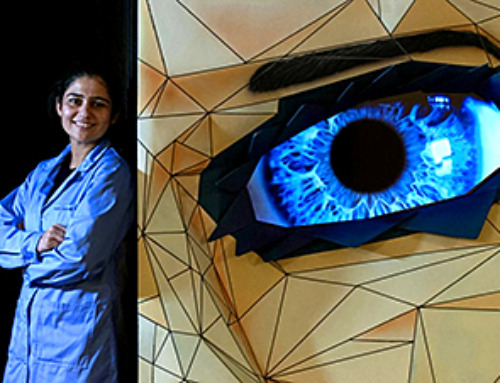Scientists have found toxic PFAS in drinking water samples from around the world, with higher levels in tap water from China compared to the UK. Boiling water or using a filtration jug can reduce PFAS levels by up to 90%, offering a simple solution to minimize exposure.
A new study reveals that scientists have found toxic ‘forever chemicals’ in drinking water samples from across the globe.
Researchers discovered 10 ‘target’ PFAS (perfluoroalkyl substances)—chemicals resistant to environmental breakdown—in tap and bottled water available for consumption in major cities across the UK and China. Perfluorooctanoic acid (PFOA) and perfluorooctane sulfonate (PFOS) were found in over 99% of bottled water samples collected from 15 countries worldwide.
They observed significant differences in PFAS concentrations between tap water samples from Birmingham, UK, and Shenzhen, China, with Chinese tap water found to have higher concentrations of PFAS compared to UK tap water.
However, the study demonstrates that measures such as boiling and/or activated carbon filtration – typically using a ‘jug’ water filter – can substantially reduce PFAS concentrations in drinking water, with removal rates ranging from 50% to 90% depending on the PFAS and treatment type.
Study Findings and Practical Solutions
Publishing their findings in ACS ES&T Water, researchers from the University of Birmingham, Southern University of Science and Technology, Shenzhen, and Hainan University, Haikou, reveal a wide range of PFAS contamination for target PFAS, starting at 63% of bottled waters tested.
Co-author Professor Stuart Harrad, from the University of Birmingham, commented: “Our findings highlight the widespread presence of PFAS in drinking water and the effectiveness of simple treatment methods to reduce their levels. Either using a simple water filtration jug or boiling the water removes a substantial proportion of these substances.
“While current PFAS levels in most water samples are not a major health concern, ongoing monitoring and regulation are crucial to protect public health. We provide valuable data on the presence of PFAS in drinking water alongside practical solutions to mitigate consumer exposure via drinking water. This is a significant step towards ensuring safer drinking water for communities worldwide.”
Bottled water from various countries showed varying levels of PFAS, with natural mineral water containing higher concentrations than purified water, but the concentrations were generally below health advisory levels set by regulatory agencies.
Co-author Professor Yi Zheng, from Southern University of Science and Technology, commented: “Increased awareness about the presence of PFAS in both tap and bottled water can lead to more informed choices by consumers, encouraging the use of water purification methods.
Our findings also suggest that the potential health risks of PFAS in drinking water may be influenced by lifestyle and economic conditions, highlighting the need for future research to further explore these factors from a socio-economic perspective.”
PFAS Levels in Bottled Water and Tap Water
Except for comparisons between natural mineral and purified water, the researchers observed no significant difference in target PFAS concentrations between glass and plastic or still and sparkling bottled water.
While concentrations of most individual PFAS were well below corresponding health-based reference values, average PFOS concentrations in tap water samples from Shenzhen, China exceeded the maximum contaminant level (MCL) of 4 ng/L newly promulgated by the US Environmental Protection Agency (USEPA) in 2024.
Researchers purchased 112 bottled water samples from local shops and online supermarkets in the UK and China including 89 still and 23 sparkling waters in either plastic or glass bottles. The samples covered 87 brands with water sources originating from 15 countries in Asia, Europe, North America, and Oceania
They collected 41 tap water samples from homes in Birmingham and the nearby cities of Worcester, Coventry, and Derby – provided by two suppliers: South Staffordshire Water and Seven Trent Water, with a further 14 tap water samples collected from homes in Shenzhen, China.
PFAS are used widely in industry, in fire-fighting foams, and consumer products from waterproof clothing and school uniforms to personal care products because of their water and stain-repellent properties. While some have been banned by government regulation, others are still widely used and their toxic effects have not yet been fully investigated.
The chemicals are already known to enter the body in different ways, for example being breathed in, ingested via food or drinking water, or absorbed through the skin. They are known to cause adverse health effects such as a lowered immune response to vaccination, impaired liver function, decreased birth weight, and increased risk of some cancers.
Reference: “Factors Influencing Concentrations of PFAS in Drinking Water: Implications for Human Exposure” by Chuanzi Gao, Daniel Simon Drage, Mohamed Abou-Elwafa Abdallah, Feng Quan, Kun Zhang, Shiyao Hu, Xue Zhao, Yi Zheng, Stuart Harrad and Wenhui Qiu, 17 October 2024, ACS ES&T Water.
DOI: 10.1021/acsestwater.4c00533
News
Differentiating cancerous and healthy cells through motion analysis
Researchers from Tokyo Metropolitan University have found that the motion of unlabeled cells can be used to tell whether they are cancerous or healthy. They observed malignant fibrosarcoma cells and [...]
This Tiny Cellular Gate Could Be the Key to Curing Cancer – And Regrowing Hair
After more than five decades of mystery, scientists have finally unveiled the detailed structure and function of a long-theorized molecular machine in our mitochondria — the mitochondrial pyruvate carrier. This microscopic gatekeeper controls how [...]
Unlocking Vision’s Secrets: Researchers Reveal 3D Structure of Key Eye Protein
Researchers have uncovered the 3D structure of RBP3, a key protein in vision, revealing how it transports retinoids and fatty acids and how its dysfunction may lead to retinal diseases. Proteins play a critical [...]
5 Key Facts About Nanoplastics and How They Affect the Human Body
Nanoplastics are typically defined as plastic particles smaller than 1000 nanometers. These particles are increasingly being detected in human tissues: they can bypass biological barriers, accumulate in organs, and may influence health in ways [...]
Measles Is Back: Doctors Warn of Dangerous Surge Across the U.S.
Parents are encouraged to contact their pediatrician if their child has been exposed to measles or is showing symptoms. Pediatric infectious disease experts are emphasizing the critical importance of measles vaccination, as the highly [...]
AI at the Speed of Light: How Silicon Photonics Are Reinventing Hardware
A cutting-edge AI acceleration platform powered by light rather than electricity could revolutionize how AI is trained and deployed. Using photonic integrated circuits made from advanced III-V semiconductors, researchers have developed a system that vastly [...]
A Grain of Brain, 523 Million Synapses, Most Complicated Neuroscience Experiment Ever Attempted
A team of over 150 scientists has achieved what once seemed impossible: a complete wiring and activity map of a tiny section of a mammalian brain. This feat, part of the MICrONS Project, rivals [...]
The Secret “Radar” Bacteria Use To Outsmart Their Enemies
A chemical radar allows bacteria to sense and eliminate predators. Investigating how microorganisms communicate deepens our understanding of the complex ecological interactions that shape our environment is an area of key focus for the [...]
Psychologists explore ethical issues associated with human-AI relationships
It's becoming increasingly commonplace for people to develop intimate, long-term relationships with artificial intelligence (AI) technologies. At their extreme, people have "married" their AI companions in non-legally binding ceremonies, and at least two people [...]
When You Lose Weight, Where Does It Actually Go?
Most health professionals lack a clear understanding of how body fat is lost, often subscribing to misconceptions like fat converting to energy or muscle. The truth is, fat is actually broken down into carbon [...]
How Everyday Plastics Quietly Turn Into DNA-Damaging Nanoparticles
The same unique structure that makes plastic so versatile also makes it susceptible to breaking down into harmful micro- and nanoscale particles. The world is saturated with trillions of microscopic and nanoscopic plastic particles, some smaller [...]
AI Outperforms Physicians in Real-World Urgent Care Decisions, Study Finds
The study, conducted at the virtual urgent care clinic Cedars-Sinai Connect in LA, compared recommendations given in about 500 visits of adult patients with relatively common symptoms – respiratory, urinary, eye, vaginal and dental. [...]
Challenging the Big Bang: A Multi-Singularity Origin for the Universe
In a study published in the journal Classical and Quantum Gravity, Dr. Richard Lieu, a physics professor at The University of Alabama in Huntsville (UAH), which is a part of The University of Alabama System, suggests that [...]
New drug restores vision by regenerating retinal nerves
Vision is one of the most crucial human senses, yet over 300 million people worldwide are at risk of vision loss due to various retinal diseases. While recent advancements in retinal disease treatments have [...]
Shingles vaccine cuts dementia risk by 20%, new study shows
A shingles shot may do more than prevent rash — it could help shield the aging brain from dementia, according to a landmark study using real-world data from the UK. A routine vaccine could [...]
AI Predicts Sudden Cardiac Arrest Days Before It Strikes
AI can now predict deadly heart arrhythmias up to two weeks in advance, potentially transforming cardiac care. Artificial intelligence could play a key role in preventing many cases of sudden cardiac death, according to [...]





















